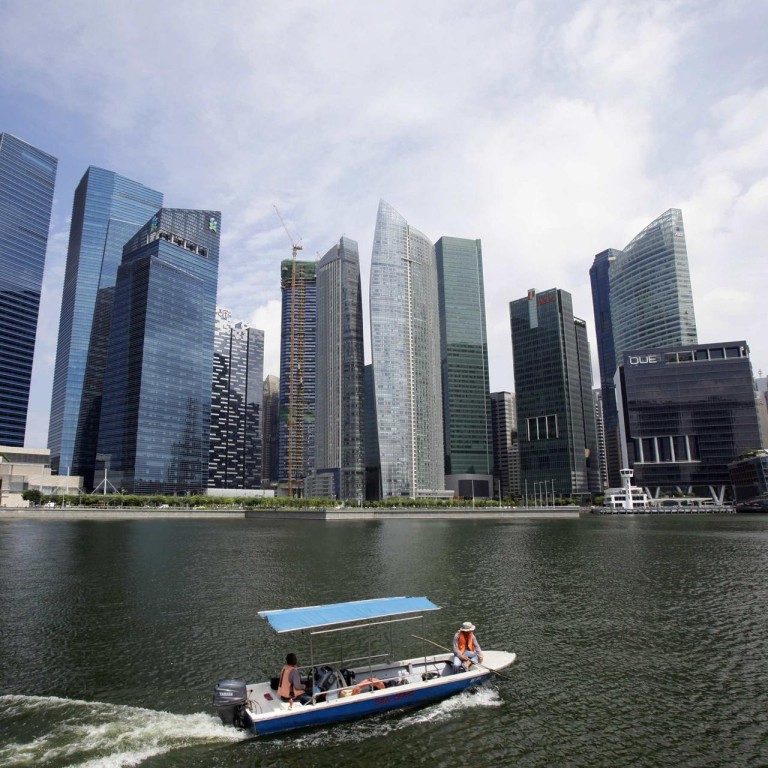
Cut price Johor homes fuel Singapore sprawl
Three-nation urban complex boasts a population bigger than London and an economy that ranks as one of the fastest growing in the region
Darren Chin gave up a 15-minute train journey to his office in Singapore for a two-hour drive with a stop at passport control. The reason: By commuting from Malaysia, he can afford his own two-storey home and car.

Chin is part of the expansion of Southeast Asia's richest city across its borders as residents and companies seek property, labour and amenities, often at half the cost or less.
The result is a three-nation urban complex with a population bigger than London and an economy that would rank as one of the fastest-growing in the region.
"Without the regional perspective it would be a lot more difficult, if at all possible, for Singapore to maintain the role that it has as a global city," said Milica Topalovic, an associate professor at Future Cities Laboratory in Singapore.
"Most of the pressing questions that Singapore has today - of land, of workforce, of ageing - can be solved easily in a regional perspective."
Combine the dominant forces of the 21st-century economy - globalisation and urbanisation - and the result is a metropolis that crosses borders, cultures and currencies. Southeast Asia's prime example is known as Sijori, an acronym derived from Singapore, the neighbouring Malaysian state of Johor, and Indonesia's Riau Islands.
For an island-state at its limits, access to land and labour in neighbours that were once rivals is crucial. Economic growth and soaring immigration have strained Singapore's resources, making it one of the most expensive places to live in the world.
Singapore's population density rose to 7,540 per square kilometre in 2013, closing in on New York's 10,425. The Ion mall in the Orchard Road shopping district descends four stories into the ground, and the government is exploring building underground storage, transport hubs and shopping areas.
The island, whose US$290 billion economy is bigger than that of the Philippines or Greece, has seen its population surge by almost a third in the past decade to 5.4 million.
Add Johor and the Riau islands, and the number was about 10.1 million in 2010, according to estimates by Aris Ananta, a senior research fellow at the Institute of Southeast Asian Studies in Singapore. That could rise to 18 million by 2030, he said.
The Sijori triangle's economy will expand 5.7 per cent annually in 2013-2020, compared with an average of 4.2 per cent for Singapore, show forecasts by Toh Mun Heng, an associate professor at the National University of Singapore Business School.
With cheaper land plentiful in southern Malaysia, money is pouring across the border. Singapore has invested at least 11 billion ringgit (HK$26 billion) in Iskandar Malaysia, a special economic zone in southern Johor established in 2006 that's three times the size of the city.
Khazanah Nasional and Temasek Holdings, the state-owned investment companies of Malaysia and Singapore, are developing projects that will comprise a wellness centre, flats, malls and spas valued at about three billion ringgit.
"There's a natural economic dynamic that will make a lot of Singaporeans invest in Johor Bahru," said Francis Yeoh, managing director of one of Malaysia's biggest builders, YTL Corp. "It's quite a good time to invest in property."
A five-bedroom, two-storey home with private pool in Iskandar was advertised last month for 3.9 million ringgit. A similar-sized home on Singapore's prime Sentosa district with a waterfront view was on sale for about 15 times as much.
The tri-nation super-city does have some unique problems. With only two road links to Malaysia, rush-hour traffic can cause delays of 90 minutes or more at immigration.
More than 130,000 vehicles a day cross the kilometre-long Causeway, built in 1923. The second route, a bridge opened in 1998, has the capacity to take another 200,000.
Developers and businesses also face currency risks and the need to deal with different legal systems. Singapore's dollar has risen about 4 per cent against the ringgit in the past year and 20 per cent against Indonesia's rupiah, making the satellites even more of a relative bargain.
Less than an hour from Singapore by fast ferry across the Singapore Strait, one of the world's busiest shipping lanes, the Indonesian islands of Batam and Bintan also are booming.
Singapore-listed Amtek Engineering completed moving all its manufacturing operations to Batam, the largest of the Riau Islands, in October and expects lower costs to improve profits after about a year, according to chief executive Daniel Yeong.
"The cost is by far lower," he said. "It's a 45-minute ferry away. I don't have to lose any of the high-quality people."
Topalovic said; "The region as a whole … in terms of culture, tourism, might be seen increasingly as one entity."
For Chin, who used to lease a room in a Singapore public-housing block and now has a four-bedroom house in Johor, the benefits are worth it.
"I couldn't afford a car in Singapore," he said.
